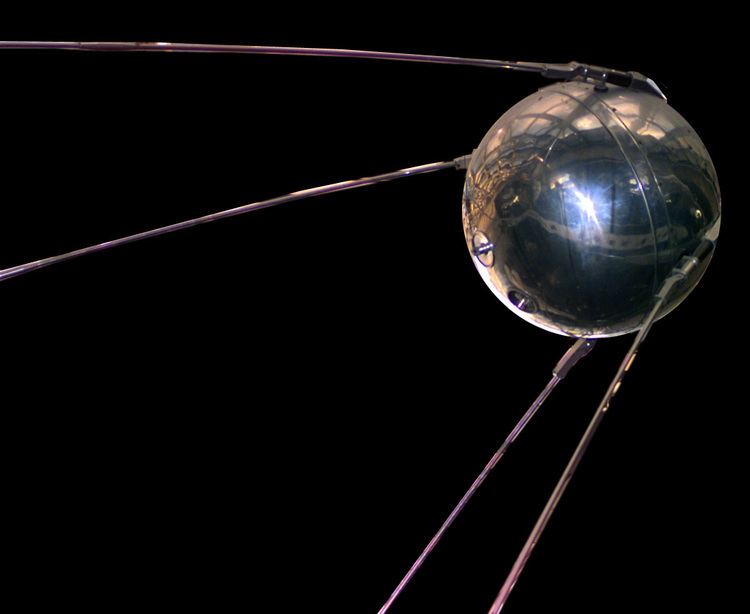 | ||
The Space Age is a time period encompassing the activities related to the Space Race, space exploration, space technology, and the cultural developments influenced by these events. The Space Age is generally considered to have begun with Sputnik (1957).
Contents
Beginning
The Space Age began with the development of several technologies that culminated on October 4, 1957, with the launch of Sputnik 1 by the Soviet Union. This was the world's first artificial satellite, orbiting the Earth in 98.1 minutes and weighing 83 kg (183 lb). The launch of Sputnik 1 ushered a new era of political, scientific and technological achievements that became known as the Space Age.
The Space Age was characterized by rapid development of new technology in a close race mostly between the US and the Soviet Union. Rapid advances were made in rocketry, materials science, computers and other areas. Much of the technology originally developed for space applications has been spun off and found additional uses.
The Space Age reached its peak with the Apollo program, that captured the imagination of much of the world's population. The landing of Apollo 11 was watched by over 500 million people around the world and is widely recognized as one of the defining moments of the 20th century. Since then, public attention has largely moved to other areas.
During the 1990s funding for space related programs fell sharply as the remaining structures of the Soviet Union disintegrated and NASA no longer had any direct competition.
Since then participation in space launches has increasingly widened to more governments and commercial interests. Since the 1990s, space exploration and space-related technologies gained a perception by many people of being commonplace.
Current period
In the early 21st century, the Ansari X Prize competition was set up to help jump start private spaceflight, which was won by Space Ship One in 2004, becoming the first spaceship not funded by a government agency.
Several countries now have space programs; from related technology ventures to full-fledged space programs with launch facilities. There are many scientific and commercial satellites in use today, with thousands of satellites in orbit, and several countries have plans to send humans into space.
Earlier spaceflights
The Space Age might also be considered to have begun much earlier than October 4, 1957, because in June 1944, a German V-2 rocket became the first man-made object to enter space, albeit only briefly. Some even considered that the Space Age started in March 1926, when American rocket pioneer Robert H. Goddard launched the world's first liquid fuel rocket, though his rocket did not reach the outer space.
Since the aforementioned V-2 rocket flight was undertaken in secrecy, it was not public knowledge for many years afterward. Further, the German launches, as well as the subsequent sounding rocket tests performed in both the United States and the Soviet Union during the late 1940s and early 1950s, were not considered significant enough to start a new age because they did not reach orbit. Having a rocket powerful enough to reach orbit meant that a nation had the ability to place a payload anywhere on the planet, or to use another term, possessed an inter-continental ballistic missile. The fact that after such a development nowhere on the planet was safe from a nuclear warhead is why the orbit standard is used to define when the space age started.
Arts and architecture
The Space Age is considered to have influenced:
